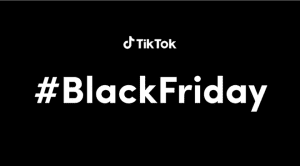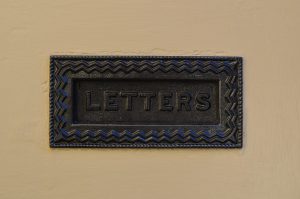
TikTok is the most prominent social network for Black Friday actions
Research with small and medium-sized companies that sell online shows a 280% growth in hiring influencers to promote promotions Small and medium-sized entrepreneurs are betting

The Power of Google Graphic Design: Harnessing visual elements to create engaging content
In today’s world, content reigns supreme. And while great copy is important, the visual elements of a piece cannot be ignored. That’s where Google graphic design comes in. In this article, we’ll explore how to harness the power of visual elements to create truly engaging content that captures your audiences’ attention.
H1: What is Google Graphic Design?
Google Graphic Design is a design philosophy promoted by Google that focuses on creating simple and effective designs using minimal elements. The philosophy is based on the principle that simplicity is key and that great design should communicate the essentials of a message without unnecessary clutter.
H2: The Importance of Google Graphic Design
Nowadays, consumers have a short attention span – you have to capture their attention quickly, or you’ll lose it. That’s where the power of Google Graphic Design comes in. It can help you create content that is easy to consume, stands out, and resonates with your audience.
H2: The Benefits of Google Graphic Design
One of the biggest benefits of Google Graphic Design is its simplicity. By removing unnecessary visual elements, it allows your message to stand out above the clutter. This can help you to communicate your message in a more effective and memorable way. Additionally, when properly used, visual elements can evoke emotions and build a connection between your brand and its audience.
H3: The Elements of Google Graphic Design
There are a few key elements that are important to consider when it comes to Google Graphic Design. First and foremost, clarity is essential. Your message must be easily understandable and the visual elements must complement it. Additionally, color scheme, typography, and imagery are crucial aspects of visual content. By selecting the right color scheme, typography, and imagery, you can create a cohesive design that is both visually appealing and effective in communicating your message.
H3: Creating Engaging Content with Google Graphic Design
Creating engaging content requires a blend of both visual and written elements. The key is to find a balance that allows the visuals to complement the written content, without overpowering it. Here are a few tips to get you started:
– Keep it simple: As mentioned before, simplicity is essential. Avoid using too many visual elements that might confuse your audience.
– Use relevant images: Select images that resonate with your audience and are relevant to your message. Avoid using generic stock photos that do not effectively communicate your message.
– Choose the right typography: Typography should be legible and complement your message. It needs to be easy on the eyes, and best suited to the context of the message.
– Make Use of Color: Color is a powerful element in content creation that can evoke emotions and create a connection with your audience. Be sure to use color strategically throughout your content to highlight important points and create visual appeal.
H3: The Role of Google Graphic Design in SEO
While there is no direct link between Google Graphic Design and SEO, there are ways that it can indirectly improve your search engine rankings. By creating visually appealing content, you will increase the likelihood that people will choose to engage with your content. As a result, this increased engagement can lead to more inbound links and social shares, which in turn can boost your search engine rankings.
H4: Tips for creating SEO-friendly visual content
– Optimize image file sizes: Large image sizes can slow down your website, which can negatively impact your rankings. Be sure to compress your images before uploading them to your website.
– Use descriptive file names: Descriptive file names help search engine crawlers to understand the content of an image. As such, it’s important to use filenames that accurately describe the image.
– Alt tags: Alt tags or ‘alternative texts’ are used to describe an image to a user when it is unable to load. Use relevant descriptions with your Alt tags.
Conclusion
Google Graphic Design is an effective way to create engaging content that resonates with your audience. By focusing on simplicity and using relevant visual elements, you can create content that stands out and increases engagement. While there is no direct correlation between Google Graphic Design and SEO, effective visual content can indirectly improve your website’s search engine rankings.
FAQs:
Q1. Can I use Google Graphic Design in my social media posts?
Yes! Google Graphic Design can be used across different platforms for creating visual content that resonates with your audience.
Q2. How long should my visual content be?
The length of your visual content will depend on the platform you are posting on. For example, Instagram Stories or Reels videos are shorter in length than YouTube videos.
Q3. Why is simplicity important in Google Graphic Design?
Simplicity is important in Google Graphic Design because it allows your message to stand out above the clutter. By removing unnecessary visual elements, you can more effectively communicate your message in a memorable way.
Q4. How can I choose the right imagery for my visual content?
Choose imagery that is relevant to your message and resonates with your audience. Avoid using generic stock photos that might not effectively communicate your message.
Q5. Is there a direct correlation between Google Graphic Design and SEO?
No, there is no direct correlation between Google Graphic Design and SEO. However, there is an indirect correlation through increased engagement that can improve your website’s search engine rankings.

Research with small and medium-sized companies that sell online shows a 280% growth in hiring influencers to promote promotions Small and medium-sized entrepreneurs are betting

Maximizing Your Marketing Potential with Klaviyo SMS Campaigns Most businesses today strive to reach their target audience as effectively as possible, and email marketing is

Maximizing Your Sales with Pipedrive Email Marketing As a business owner, you are constantly looking for ways to maximize your sales and grow your customer

Talk with us!
Do you have a project in mind? Send us a message to understand how we can help you. We will get in touch with you.